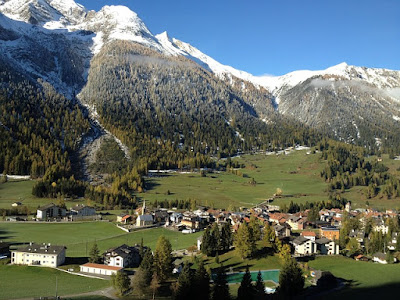LAND, SOIL, WATER, NATURAL VEGETATION AND WILDLIFE RESOURCES
NCERT Chapter Solutions and other Q & A
Q1. Which are the two main climatic factors responsible for soil formation?
Answer: Temperature and rainfall
Q2: Write any two reasons for land degradation today.
Answer:
i. deforestation,
ii. overgrazing,
iii. overuse of chemical feritilisers or pesticides,
iv. landslides and floods
v. urbanization on arable land
Q3: Why is land considered an important resource?
Answer: Land is considered as an important resource because:
i. it provides habitation to a wide variety of flora and fauna.
ii. We use it for various purposes such as agriculture, forestry, mining, building houses and roads, and setting up industries.
Q4: What type of land is sparsely populated or uninhabitated?
Answer: The land having rugged topography, steep slopes of the mountains, low-lying areas susceptible to water logging, desert areas, thick forested areas are normally sparsely populated or uninhabited.
Q5: Name any two steps that government has taken to conserve plants and animals.
Answer: Two steps taken by the government to conserve plants and animals:
i. Setting up national parks, wildlife sanctuaries and biosphere reserves to protect natural vegetation and wildlife. e.g. the Kaziranga National Park in Assam.
ii. Ban on killing or hunting of animals lions, tigers, deer, great Indian bustards and peacocks.
iii. Prohibited trade of the species of plants and animals protected under the international agreement CITES.
Q6: What is a National Park?
Answer: A natural area designated to protect the ecological integrity of one or more ecosystems for present and future generations is called National Park.
Q7: Suggest three ways to conserve water.
Answer: Three ways to conserve water are:
i. Rain-water harvesting.
ii. Efficient irrigation like sprinklers, drip irrigation and lined canals to avoid seepage of water.
iii. Afforestation to restore ground water level.
Q8: (MCQ) Which one of the following is nota factor of soil formation?
(a) Time
(b) Soil texture
(c) Organic matter
Answer: (b) Soil texture
Q9: (MCQ) Which one of the following methods is most appropriate to check soil erosion on steep slopes?
(a) Shelter belts
(b) Mulching
(c) Terrace cultivation
Answer: (c) Terrace cultivation
Q10: (MCQ) Which one of the following is not in favour of the conservation of nature?
(a) Switch off the bulb when not in use
(b) Close the tap immediately after using
(c) Dispose polypacks after shopping
Answer: (c) Dispose polypacks after shopping
Q11: Match the following.
(i) Land use (a) Prevent soil erosion
(ii) Humus (b) Land suitable for agriculture
(iii) Rock dams (c) Productive use of land
(iv) Arable land (d) Organic matter deposited on top soil
(e) Contour ploughing
Answer:
(i) Land use (c) Productive use of land
(ii) Humus (d) Organic matter deposited on top soil
(iii) Rock dams (a) Prevent soil erosion
(iv) Arable land (b) Land suitable for agriculture
Q12: State whether the given statements are true or false. If true, write the reasons.
(i) Ganga-Brahmaputra plain of India is an overpopulated region.
(ii) Water availability per person in India is declining.
(iii) Rows of trees planted in the coastal areas to check the wind movement is called inter-cropping.
(iv) Human interference and changes of climate can maintain the ecosystem.
Answer:
(i) TRUE. Plains and river valleys offer suitable land for agriculture. Hence, these are densely-populated areas of the world.
(ii) TRUE. Though water is present in abundance, fresh/potable water is a scarce resource. Due to urbanization, wastage of water, deforestation, pollution and depletion of fresh water reserves (such as rivers and ground water), the availability of water is fast declining.
(iii) False. The said process is called shelter belts. It is used check the wind movement to protect soil cover.
(iv) FALSE. Human interference and climatic changes cause the loss of natural habitats for the plants and animals.
Q13: What are the causes of landslide?
Answer: Causes of the landslide are:
i. Earthquakes
ii. Floods
iii. Volcanic eruption
iv. Prolonged spell of rainfall.
Q14: What does CITES stand for?
Answer: Convention on International Trade in Endangered Species of Wild Fauna and Flora.
Q15: What are Deciduous trees?
Answer: Deciduous trees shed their leaves in a particular season to conserve loss of moisture through transpiration.


this is a very helpful site.....helps me a lot.....
ReplyDeleteyes...
DeleteNot at all
Deletenice concept... good help for revision ....
ReplyDeleteThis comment has been removed by a blog administrator.
ReplyDelete~I love this 😍 it helped me a lot~
ReplyDeleteVery helpful
ReplyDelete